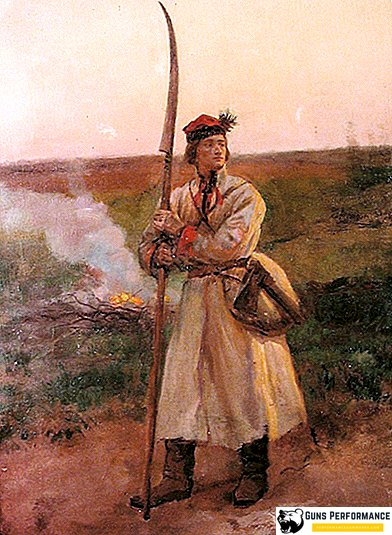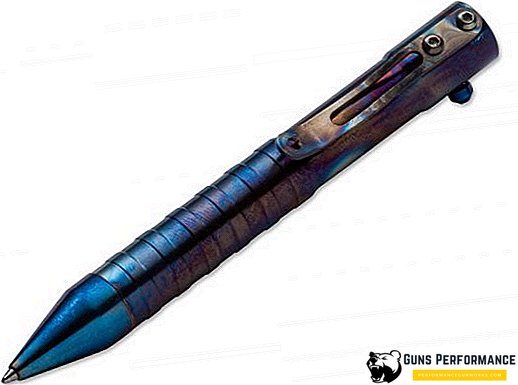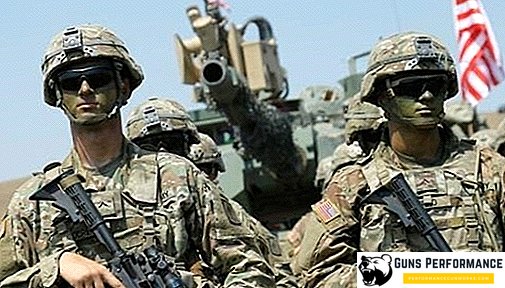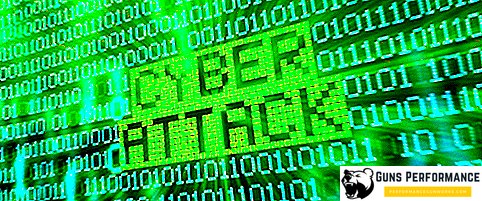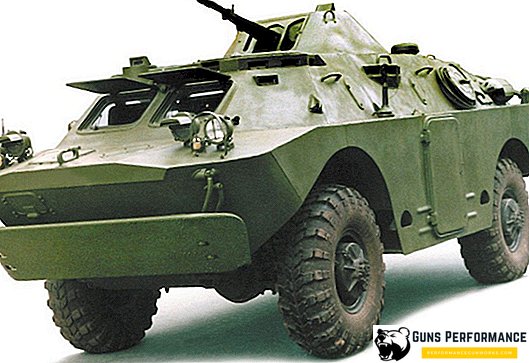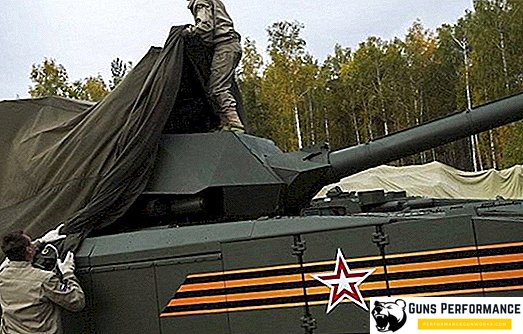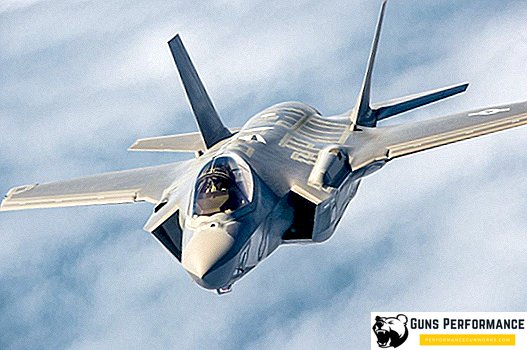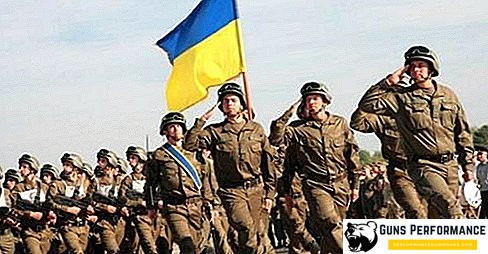In military conflicts of the last decades, rapid reaction troops play an increasing role. In Russia, they are traditionally airborne. Although, the Airborne Forces are not quick reaction forces in the full sense of the word, their function is somewhat broader. The main function of the paratroopers is to perform tasks in the enemy's rear, destroying communications, stifling the enemy’s reserves, conducting sabotage and destroying particularly important objects.
The Airborne Forces are designed for operations in the enemy rear, without the support of artillery, ammunition hauling and replenishment. Therefore, special requirements for weapons and equipment of paratroopers. The equipment that is in service in the airborne units must be suitable for landing from the air, and special requirements are placed on it for maneuverability, reliability and combat power. In conditions in which the paratroopers must operate, it is impossible to repair the equipment. It is she who should provide reliable fire cover, because the landing usually fights without the support of artillery and aircraft.

In the Soviet Union, there was a special relationship with the Airborne Forces: these troops were considered elite. In the late 60s, a light armored tracked vehicle was created specifically for paratroopers, which can be landed from airplanes. She received the name BMD - airborne combat vehicle.
In 2008, the general public was shown a new machine - the BMP-4M, which combined the entire half-century experience of creating such a technique.
The history of the machine
In 2004, a new vehicle, the BMD-4, was adopted by the Airborne Forces. The following year, the first BMD were delivered to the troops. Without exaggeration, this car can be called unique, it has no analogues in many characteristics.
The BMD-4 was equipped with a new weapons unit "Bakhcha", which is similar to that installed on the BMP-3. It includes a 100-mm cannon, which can serve as a launcher for anti-tank missiles, a 30-mm cannon 2A72 and a PKT machine gun. The firepower of the new machine has increased several times.
BMD-4 can be landed with the crew inside. Also, this machine can swim and can change its ground clearance of forty centimeters.

In 2008, a new machine was introduced at the Kurgan Machine Building Plant - the BMD-4M, which is a deep modernization of the BMP-4. One of the reasons for the development of this machine was the bankruptcy of the plant in Volgograd, where BMD-4s were manufactured. The development of Kurgan machine builders received a new building, more unified with the BMP-3 and an improved armament block (Bakhcha-U).
The presentation of the new machine was attended by the high command of the armed forces, and it was planned to make the BMP-4M the basis for an airborne combat vehicle. However, the situation has changed somewhat. In 2010, the Commander-in-Chief of the Airborne Forces, Vladimir Shamanov, announced the desire of paratroopers to adopt up to 200 such vehicles. But already in 2012, Deputy Defense Minister Alexander Sukhorukov announced that the Ministry of Defense would not buy BMD-4M, because of its low security from bullets and mines. A little later, there was information that the car still adopted. In 2014, the car completed troop tests. At the beginning of 2018, the Airborne Forces received 12 units of new equipment. In total, this year it is planned to supply 62 units of BMD-4M.
Description
BMD-4M has anti-bullet reservation, its body is made of aluminum armor, which provides an adequate level of protection and at the same time allows you to make the car easier. It can be landed together with the crew from an airplane, it can swim, developing a speed of 10 km / h on the water. The number of paratroopers increased by one person.

The developers seriously changed the body of the car and unified it with the body of the BMP-3, thanks to which the production costs were seriously reduced and the maintenance of the new machine was simplified. The new car received the engine from the BMP-3, the other elements of the power plant, the car also used many of the chassis components of the BMP-3. In general, the BMD-4M is very different from the BMD-4.
The crew of the car is three people, in addition, the car can accommodate six more paratroopers.
The machine is armed with a combat module "Bakhcha-U", which was used on the BMP-4. So, after the start of the use of this technology in the army, the crews will not need to retrain. The armament, which is included in the combat module "Bakhcha-U" is similar to that installed on the BMP-3, and this is an undoubted advantage.

The BMD-4M is armed with a 100-mm cannon and a 30-mm cannon 2A72, and a PKT machine gun is also installed on the machine. A 100-mm cannon can be a launcher for guided missiles "Arkan", in ammunition include high-explosive fragmentation shells. This gun can destroy enemy armored vehicles and their manpower. A 30-mm automatic cannon can effectively fight against enemy light armored vehicles, and it is also effective against infantry. It can fire at low-flying aerial targets. To improve the accuracy of fire, the muzzle of a 30-mm cannon is connected to the barrel of a 100-mm cannon (as in the BMP-3). The BMD-4M is equipped with the installation "Cloud" with six mortars for the production of smoke screens.

The turret is equipped with an automatic loader, which provides a very high rate of fire. This BMD-4M compares favorably with the ACS "Nona", which today is in service with the Russian Airborne Forces.
The combat module includes an automatic fire control system and a weapon stabilization system in two planes. This allows you to conduct aimed fire on the go. A thermal imager, night vision sight, laser range finder, target tracking equipment are installed on the machine. The firing range of guided missiles "Arkan" exceeds five kilometers. The combat module has an elevation angle of up to 60 degrees.
The BMD-4M is equipped with a wonderful UTD-29 diesel engine (this one stands on the BMP-3), which made it possible to seriously increase the specific power. The car develops a speed of over 70 km / h on the highway. This is a very high speed for tracked vehicles. The machine has a very high maneuverability. Can overcome water obstacles. Movement on water is carried out by water-jet engines, which are located in the rear part of the machine. BMD-4M can float at a speed of 10 km / h, even with waves of up to three points. In this car, paratroopers can evacuate not only through the stern, but also through the upper hatches, which is very important in the event of an emergency.

The capacity of the fuel tanks allows the BMD-4M to make 500-kilometer raids without refueling. This is a very high degree of autonomy for light armored vehicles and is especially important for the landing.
Specifications
Below are the tactical and technical characteristics of the BMD-4M airborne combat vehicle.
| Mass, t | 13,5 |
| Length mm | 6100 |
| Width, mm | 3110 |
| Height mm | 2450 |
| Clearance, mm | 190 - 590 |
| Speed km / h | |
| on the highway | 70 |
| afloat | 10 |
| Power reserve | |
| on the highway, km | 500 |
| Engine | UTD-29 |
| Engine power, l. with. | 500 |
| Specific power, l. with. per ton | 37 |
| Overcoming obstacles | |
| elevation angle | 35 |
| roll angle | 25 |
| pit width, m | 2 |
| wall height, m | 0,7 |
| Armament | cannon 100 mm 2A70, 30 mm automatic cannon, 2A72 and PKT machine gun |
| Ammunition, pcs. | 34 and 4 missiles "Arkan", 500 |
| Crew | 3 |
| Landing, people | 6 |


